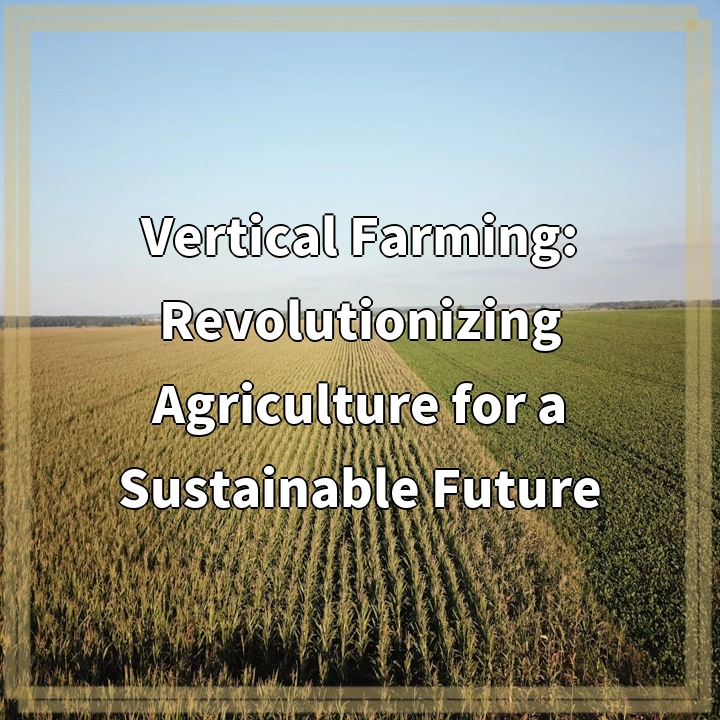
What it is:
Vertical farming refers to the practice of growing crops in stacked layers or vertically inclined surfaces, utilizing controlled-environment agriculture (CEA) technology. This innovative approach often incorporates hydroponics, aquaponics, and aeroponics, allowing for the efficient use of space and resources. By utilizing urban spaces, vertical farms can significantly reduce transportation costs and deliver fresh produce directly to consumers, thereby promoting sustainability and reducing the carbon footprint associated with traditional agriculture.
The Benefits of Vertical Farming
One of the primary advantages of vertical farming is its ability to produce food in areas with limited arable land. By using advanced lighting systems and climate control, vertical farms can create optimal growing conditions year-round, independent of external weather conditions. Additionally, vertical farms use significantly less water than traditional farming methods, as many systems recirculate water and nutrients, minimizing waste. This method can also eliminate the need for pesticides and herbicides, as the controlled environment helps prevent pest infestations.
Real-world Problems
Despite its many advantages, vertical farming faces several real-world challenges that may hinder its widespread adoption.
High Initial Costs
One of the major drawbacks of vertical farming is the high initial investment required to set up the infrastructure. The advanced technologies involved, such as LED lighting systems, climate control, and automated growing systems, can be cost-prohibitive for many startups. While operational costs may eventually decrease, the upfront investment limits accessibility for small-scale farmers.
Energy Consumption
Vertical farming relies heavily on artificial lighting and climate control, which can lead to significant energy consumption. Although renewable energy sources can mitigate some concerns, the environmental impact of energy-intensive vertical farms raises questions about their overall sustainability. Balancing energy needs with operational efficiency remains a critical challenge for the industry.
Limited Crop Variety
Currently, vertical farming is best suited for growing leafy greens and herbs. While research is ongoing to expand crop varieties, many staple crops like grains and root vegetables are still challenging to cultivate in a vertical farm setup. This limitation restricts the potential of vertical farming to fully address global food security issues.
Technological Dependence
Vertical farming relies on various technologies for its operations; any failure or malfunction can result in widespread crop losses. Systems like hydroponics and automated climate control require constant monitoring and maintenance, and farmers must be well-versed in technological aspects to manage their farms effectively. This dependence on technology can create barriers for some farmers, particularly those without technical training.
Market Competition
The rise of vertical farming has sparked increased competition among food producers. As traditional agriculture seeks to innovate, vertical farms may face challenges in distinguishing their products in the marketplace. Consumers may not always be willing to pay a premium for locally sourced, hydroponically grown produce compared to cheaper conventional options.

Solutions to Challenges in Vertical Farming
To address the real-world problems associated with vertical farming, several solutions can be implemented to enhance its viability and sustainability in the agricultural landscape.
Reducing Initial Costs
One way to mitigate the high capital investment in vertical farming is through partnerships and cooperative models. By pooling resources, small-scale farmers can share infrastructure and technologies, reducing individual costs. Additionally, government grants and subsidies aimed at sustainable agriculture can provide financial support to new and existing vertical farms.
Enhancing Energy Efficiency
To tackle energy consumption, vertical farms can invest in renewable energy sources, such as solar panels and wind turbines, to offset their energy requirements. Implementing energy-efficient technologies, such as advanced LED lighting that adjusts to plant needs, can further minimize energy usage. Research into more efficient agricultural practices is also crucial to developing a balance between crop production and energy consumption.
Expanding Crop Variety
Investing in research and development to explore new agricultural technologies can help expand the types of crops that can be grown in vertical farms. Techniques such as genetic modification and precision agriculture may enable the cultivation of a wider variety of plants, including grains and root vegetables, thereby addressing food security challenges more effectively.
Minimizing Technological Dependence
Enhancing farmer education and training programs focused on vertical farming technologies can help reduce dependence on specialized knowledge. By equipping farmers with the skills necessary to maintain and troubleshoot their systems, operations can run more smoothly and minimize the risk of crop loss due to technological failures. Additionally, user-friendly systems can make technology more accessible for farmers at all skill levels.
Building Market Awareness
To effectively compete in the marketplace, vertical farms can engage in targeted marketing campaigns that highlight the benefits of locally sourced, sustainable food. Building strong relationships with local restaurants, grocery stores, and consumers can help create a loyal customer base. Transparency in farming practices and the environmental benefits of vertical farming can further attract consumers interested in sustainability.















